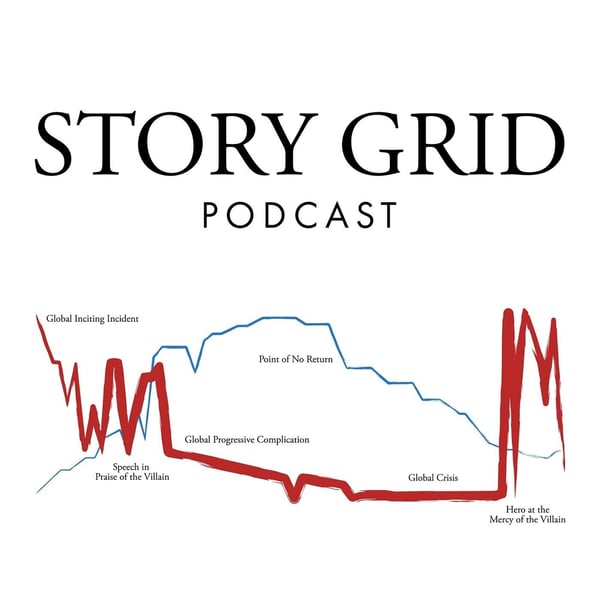The Atomic Theory of Storytelling
Story Grid Writing Podcast
Shawn Coyne
4.8 • 767 Ratings
🗓️ 12 April 2019
⏱️ 51 minutes
🧾️ Download transcript
Summary
Transcript
Click on a timestamp to play from that location
| 0:00.0 | Hello and welcome to the Storygrid podcast. This is a show dedicated to helping you become a better writer. |
| 0:06.7 | I'm your host Tim Grawl and I'm a struggling writer trying to figure out how to tell a story that works. |
| 0:12.7 | Joining me shortly is Sean Coyne. He is the creator of StoryGrid, the author of the book StoryGrid, and an editor with over 25 years experience. |
| 0:23.2 | In this episode, we continue working through the basics of storytelling and looking at the story grid. And we start off talking about |
| 0:30.1 | the Kubler-Ross curve and the gas gauge of needs. But then we also just talk some more about |
| 0:35.9 | the fears that we've talked about in the last |
| 0:38.5 | couple episodes, how that applies and how that kind of mirrors some atomic theory as well. |
| 0:44.7 | It's really interesting. |
| 0:45.6 | So it's a great episode. |
| 0:46.9 | I think he'll enjoy it. |
| 0:47.9 | So let's jump in and get started. |
| 0:50.5 | So Sean, as we've been kind of working through the basics and kind of the foundational principles of StoryGrid, the next thing I was looking at was the Kubler-Ross change curve for story, which then got me thinking about the gas gauge of needs, which you came up with after the book, |
| 1:13.8 | which got me thinking about the hierarchy of needs. |
| 1:18.5 | Yes. |
| 1:19.3 | Which to me, they all kind of are a way of looking at the emotional valence in different ways. |
| 1:26.4 | So I just wanted to kind of look at that, talk about the emotional valence in different ways. So I just wanted to kind of look at that, talk about the |
| 1:30.8 | emotional valence stuff, because we talked about math, you know, last time. And so transitioning |
| 1:38.1 | into how you think about these things and how it applies to story. I'm not really sure where to go, like where to start other than like each of those |
| 1:47.8 | things are a different way to look at the emotional, you know, drives of your characters. |
| 1:54.9 | And so, I mean, in the book, you start off with the Kubler-Ross change curve, so maybe we start |
| 2:00.1 | there. |
| 2:00.8 | Sure. |
... |
Please login to see the full transcript.
Disclaimer: The podcast and artwork embedded on this page are from Shawn Coyne, and are the property of its owner and not affiliated with or endorsed by Tapesearch.
Generated transcripts are the property of Shawn Coyne and are distributed freely under the Fair Use doctrine. Transcripts generated by Tapesearch are not guaranteed to be accurate.
Copyright © Tapesearch 2025.

